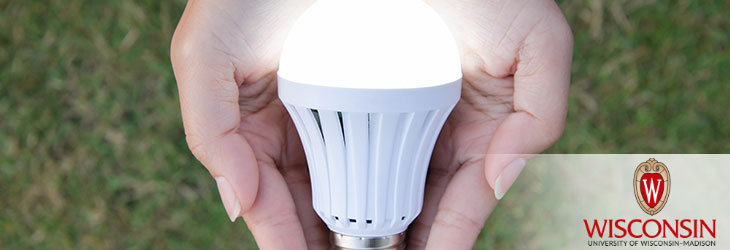Clean Technology

Better Biomass Conversion with Recyclable GVL Solvent
WARF: P130123US01
Inventors: James Dumesic, Jeremy Luterbacher
The Wisconsin Alumni Research Foundation (WARF) is seeking commercial partners interested in developing a method for producing water-soluble sugars from lignocellulose using GVL, a biomass-derived solvent.
Overview
To recover useful carbohydrates locked in biomass, molecular bonds must be broken while avoiding further reaction of the resulting glucose and xylose sugars. This is a challenge because glucose can degrade quicker than it is produced. Fast, hot reactions try to minimize such degradation, but are impractical. Expensive catalysts and cellulose-converting enzymes (which require feedstock pretreatment) also can be used at high cost.
A new, milder strategy is sought to efficiently produce and preserve desired sugars. One promising approach involves flowing a solvent through a heated, packed bed of biomass. To be viable, these flow-through systems need to increase yields.
A new, milder strategy is sought to efficiently produce and preserve desired sugars. One promising approach involves flowing a solvent through a heated, packed bed of biomass. To be viable, these flow-through systems need to increase yields.
The Invention
UW–Madison researchers have developed a method for producing soluble C6 and C5 carbohydrate oligomers and monomers from biomass. These include glucose, xylose and other sugars.
In the process, lignocellulosic material is reacted with water and gamma-valerolactone (GVL) – an organic solvent derived from biomass. This occurs in the presence of an acid catalyst under moderate temperatures, and results in the conversion of water-insoluble to water-soluble carbohydrates. These desired products are partitioned into an aqueous layer, where they can be recovered, concentrated and purified. The GVL separates into another layer to be recycled.
In the process, lignocellulosic material is reacted with water and gamma-valerolactone (GVL) – an organic solvent derived from biomass. This occurs in the presence of an acid catalyst under moderate temperatures, and results in the conversion of water-insoluble to water-soluble carbohydrates. These desired products are partitioned into an aqueous layer, where they can be recovered, concentrated and purified. The GVL separates into another layer to be recycled.
Applications
- Biomass depolymerization and conversion is the first step in making a wide variety of biofuels and other products.
Key Benefits
- Close to 100 percent of hemicellulose and more than 80 percent of cellulose are recovered as soluble carbohydrates.
- No additional catalysts
- GVL is inexpensive and recyclable.
- Fifty to 400 percent more glucose and xylose is recovered as compared to other flow-through systems.
- Avoids environmental and economic costs of mineral acids, enzymes and ionic liquids
Stage of Development
The development of this technology was supported by WARF Accelerator. WARF Accelerator selects WARF's most commercially promising technologies and provides expert assistance and funding to enable achievement of commercially significant milestones. WARF believes that these technologies are especially attractive opportunities for licensing.
Additional Information
Related Technologies
Related Intellectual Property
For current licensing status, please contact Jennifer Gottwald at [javascript protected email address] or 608-960-9854